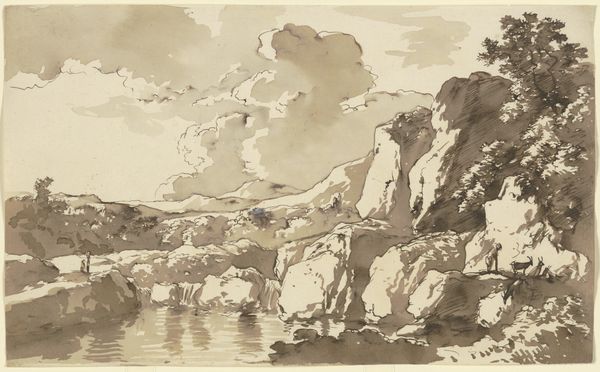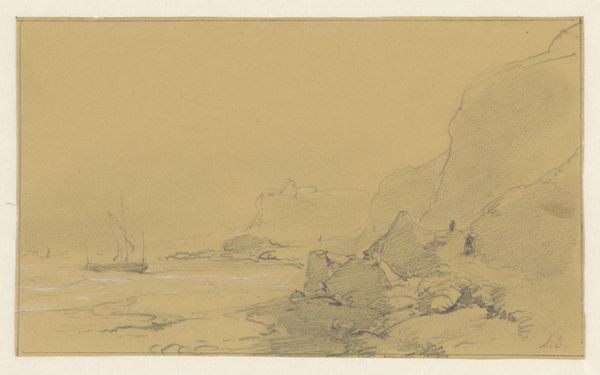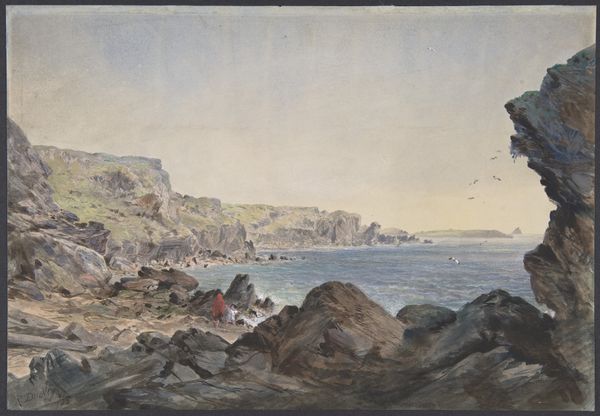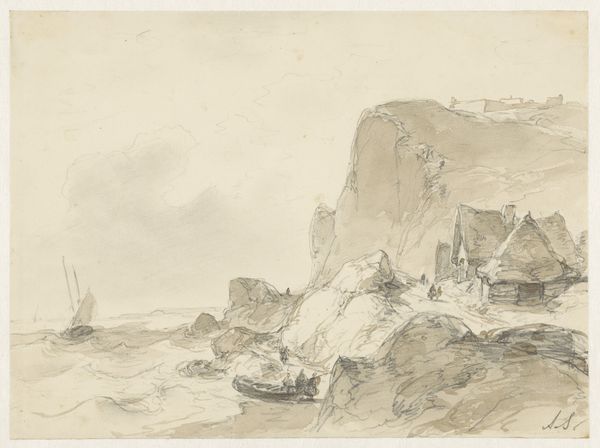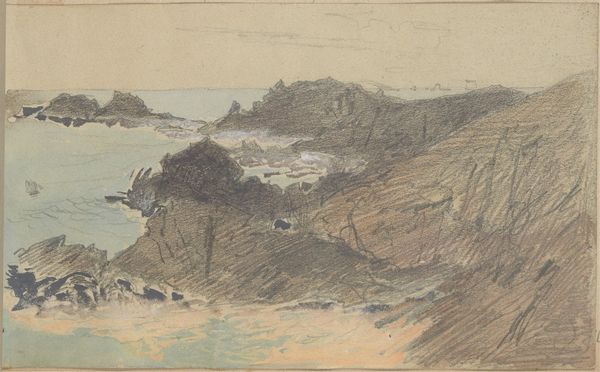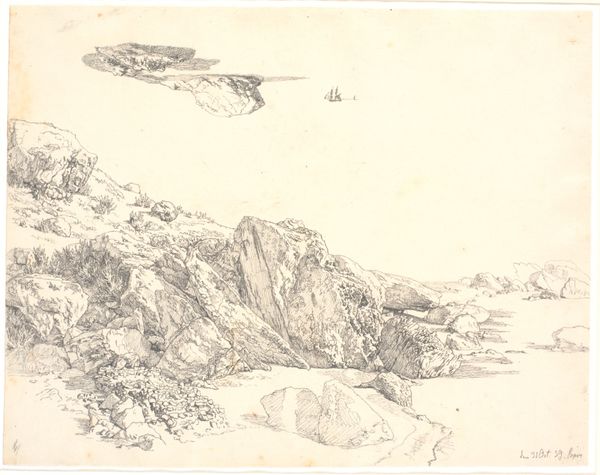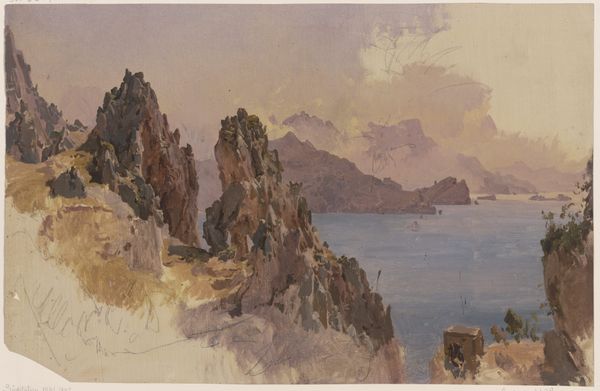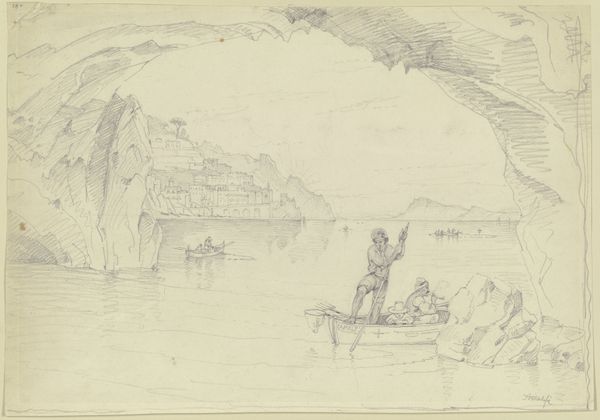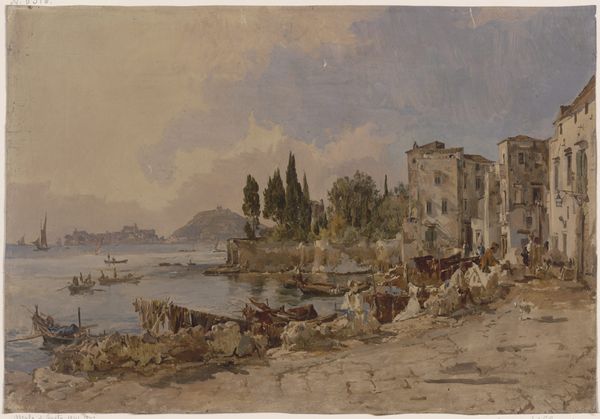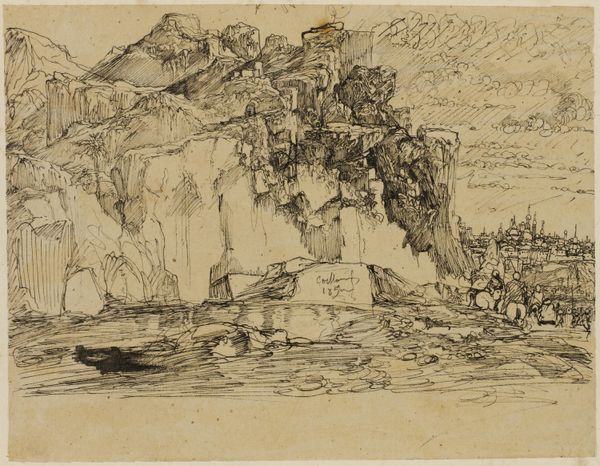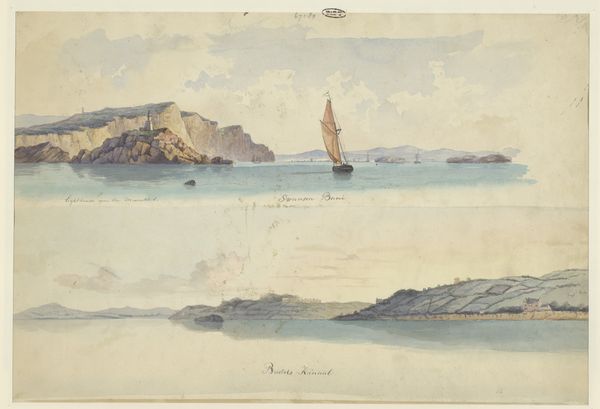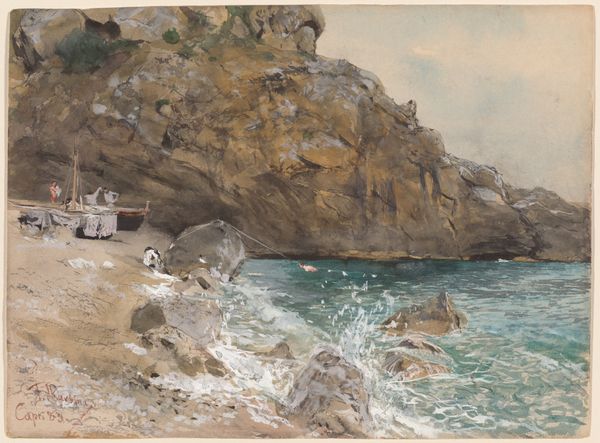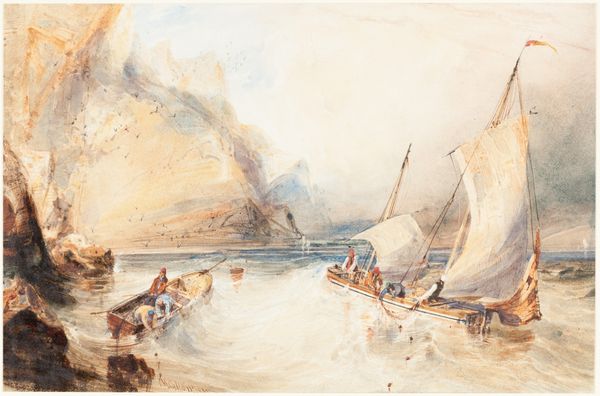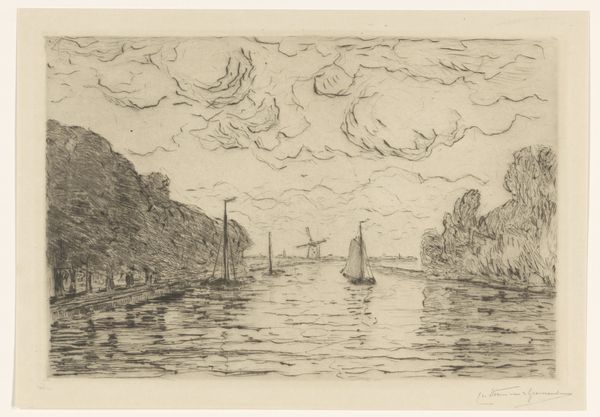
drawing, painting, plein-air, paper, watercolor
#
drawing
#
16_19th-century
#
austrian
#
painting
#
plein-air
#
landscape
#
paper
#
watercolor
#
romanticism
#
cityscape
#
watercolor
Copyright: Public Domain
Curator: Johann Nepomuk Rauch's watercolor "La Marina grande del Vico," painted in 1841, captures a vibrant coastal scene, now housed at the Städel Museum. Editor: Wow, it's instantly captivating. There's a kind of dreamy quality. I love how the light catches the cliff face, giving the scene a soft, almost ethereal glow. Curator: Rauch's use of watercolor here is quite remarkable; we can see the layers building to depict both the architectural structures nestled at the cliff's base and the boats on the water. These landscapes gained popularity due in part to the burgeoning accessibility and affordability of art supplies and materials, supporting the production of plein-air artworks. Editor: True, it looks so spontaneous, almost like a sketch, but look at the details. I find myself drawn to the rocky beach in the foreground. The shadows on those stones! The water's edge… it’s all so… inviting, a bit dangerous even. The entire atmosphere is charged, don’t you think? Curator: It's very possible the setting, likely in Italy given its southern maritime themes, presented opportunities for the burgeoning tourism industry during that time. And indeed, that Romanticist spirit is quite noticeable as seen with its handling of nature and its relation to the structures along the sea. I wonder how much that new accessibility also informed its style: the quick application may be less about choice and more about necessity of speed! Editor: Perhaps both! Looking at this, it's like I'm stepping into someone’s memory of that day, a beautiful, wistful, almost… salty feeling takes me. Curator: In this watercolor drawing on paper, Rauch synthesizes the visual qualities and textures associated with Romanticism, mass culture, and resource accessibility during this period. Editor: That's beautifully said. Now I can see more that it is a sort of window through time, to a place made of stone and water and, apparently, burgeoning industry. Curator: It offers insight into how landscape, technique, and context entwine. Editor: Absolutely, it truly does reward a second look!
Comments
No comments
Be the first to comment and join the conversation on the ultimate creative platform.
